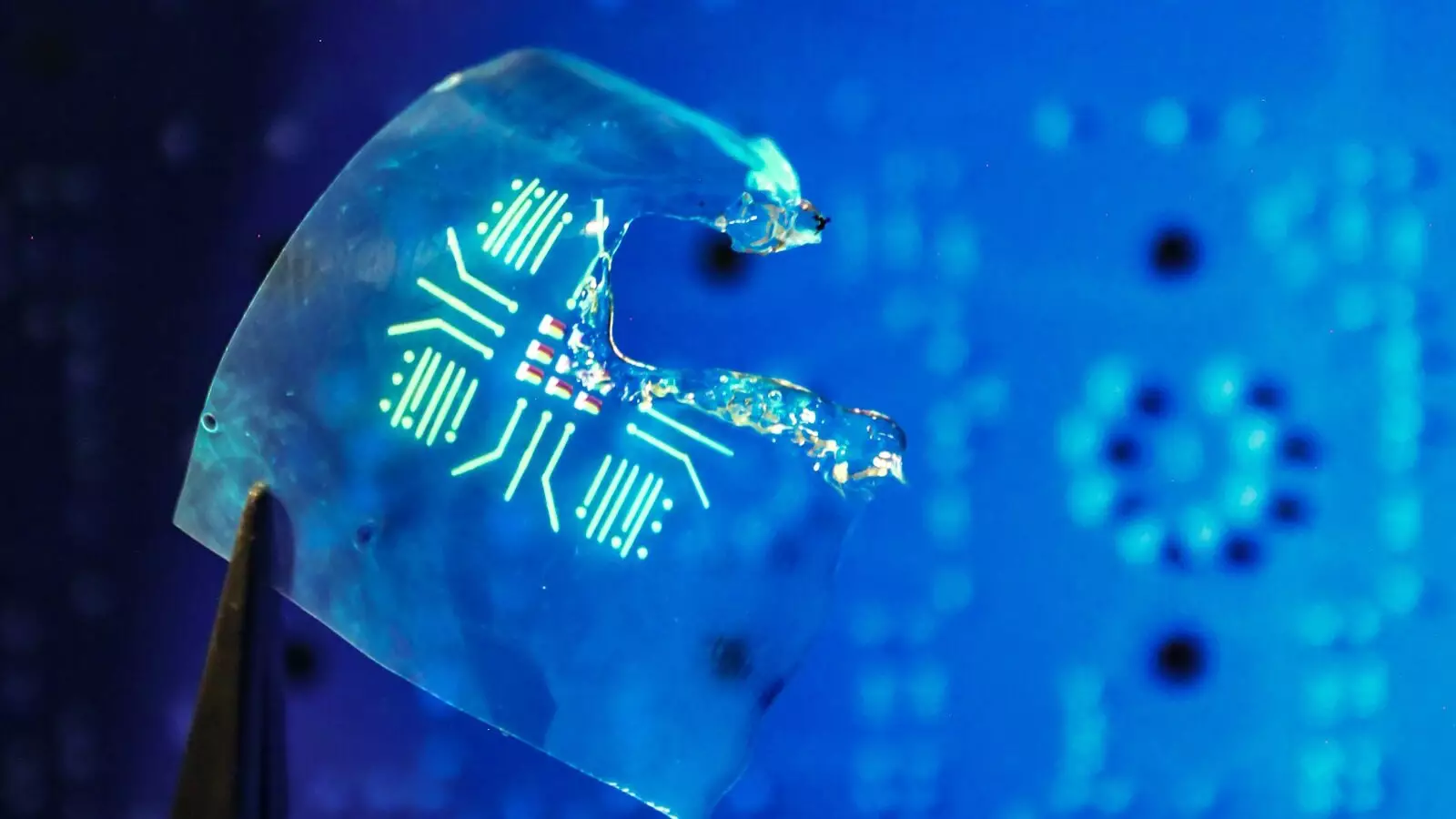In an era of rapid technological advancement, our cravings for seamless connectivity and intuitive designs have resulted in an expanding electronic waste crisis. Everyday devices such as smartphones, tablets, and even car navigation systems often end up in landfills after their brief life cycles. This burgeoning waste problem is exacerbated by the conventional materials underpinning these devices, which rarely prioritize sustainability. Traditional electronics feature luminescent polymers, crucial for various applications due to their flexibility and efficiency, yet these materials typically become part of the waste stream when obsolete. It is this very disconnect between functionality and environmental responsibility that spurred researchers at the U.S. Department of Energy’s Argonne National Laboratory, among others, to devise a groundbreaking solution.
Introducing Biodegradable Luminescent Polymers
In a remarkable research endeavor, a team of scientists has developed a new class of luminescent polymers that not only emit light effectively but are also designed with biodegradability and recyclability in mind. By integrating a chemical agent known as tert-butyl ester, these innovative polymers can break down under relatively mild conditions. This is a stark departure from traditional, non-decomposable luminescent materials that contribute significantly to electronic waste. The project exemplifies the harmony between advanced material science and ecological consideration, effectively making the case that sustainability can be integrated into the design phase of electronics.
Performance Meets Purpose
The researchers did not compromise on performance while achieving sustainability. Their novel polymers demonstrated an impressive external quantum efficiency of 15.1% in electroluminescence—an astonishing tenfold increase over previously available degradable alternatives. This performance metric is vital, as it not only indicates the efficiency of the light source but also assures manufacturers that they can meet consumer demands for high-quality electronics without turning a blind eye to the environmental implications.
With potential applications across diverse fields including medical imaging and display technologies, these biodegradable polymers are set to revolutionize how we think about electronics. They reflect the dual mandate of modern design: innovation must meet functionality while respecting ecological limits.
The Road Ahead: From Lab to Market
The transformative potential of these biodegradable luminescent polymers lies not just in their design but also in their scalability. The researchers now face the challenge of transitioning from laboratory prototypes to mass production. This step is crucial for these materials to make a tangible impact in the real world. The team has already identified pathways to integrate these polymers into existing technologies—an endeavor that could drastically change standard practices in electronics production, allowing devices like smartphones and televisions to enter the market with sustainability encoded in their very DNA.
As the electronic device industry anticipates massive growth—projected from $46 billion today to an astounding $260 billion by 2032—the call for sustainable practices has never been more urgent. With innovative solutions like biodegradable luminescent polymers, there is hope that the burdens posed by electronic waste can be mitigated significantly. However, scaling such initiatives requires cross-disciplinary collaboration among engineers, designers, and environmental scientists to ensure that sustainability becomes a core principle rather than an afterthought in product development.
A Catalyst for Change in the Industry
These findings serve as potent reminders that the future of electronics lies in proactive design rather than reactive remedies. Leaders in material science, such as Jie Xu, project lead at Argonne, emphasize the necessity of rethinking conventionally held views about manufacturing and material use. This research fuels optimism among advocates for sustainable design, echoing the sentiment that every innovation can strive for environmental synergy. As industries pivot towards more sustainable practices, the implications of this research extend beyond mere polymers; they point towards a future in which the electronic landscape can evolve harmoniously with ecological priorities.
The development of biodegradable luminescent polymers not only presents an opportunity to curtail the mounting electronic waste crisis but also redefines the parameters by which we judge technological success. As these materials pave the way for a greener future, they underline the responsibility innovators have to reimagine the lifecycle of electronics from inception to disposal. Harnessing this potential could lead to more eco-conscious consumer culture, where sustainable choices are the norm rather than the exception.

